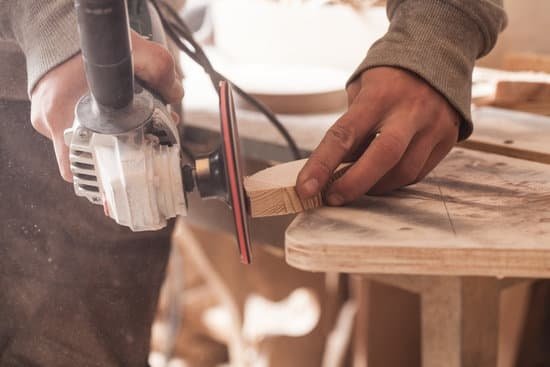Are you wondering where to get free wood for woodworking? The cost of materials can sometimes hinder the progress of a woodworking project, but there are actually many ways to find free or low-cost wood.
In this article, we will explore various resources and methods for obtaining wood for your next woodworking project without breaking the bank. Not only is finding free wood beneficial for your wallet, but it also has a positive impact on the environment by repurposing and reusing materials.
One of the main benefits of finding free wood is the significant cost savings it provides. Whether you’re a novice DIY enthusiast or an experienced woodworker, reducing material expenses allows you to allocate more funds towards other aspects of your project. Additionally, repurposing wood contributes to environmental sustainability by minimizing waste and reducing the demand on natural resources. By utilizing discarded or unused wood, you can help reduce deforestation and promote eco-friendly practices in woodworking.
In this article, we will explore various avenues for obtaining free wood, from local community resources to online platforms and urban foraging. We will also provide tips on safely and legally collecting fallen trees and branches as well as salvaging wood from discarded furniture and pallets.
Furthermore, we will discuss the importance of safety when collecting and using free wood, as well as ethical considerations for sustainable woodworking practices. So let’s dive into the world of finding free wood for woodworking projects.
Community Resources
Recycling centers are particularly valuable resources for obtaining free wood for woodworking. These facilities often accept a wide range of materials, including used lumber and wooden pallets. By establishing a relationship with a local recycling center, individuals interested in woodworking may have regular access to these resources. Additionally, construction sites and lumber yards are known for discarding offcuts and leftover pieces of wood that can be salvaged and repurposed into small-scale woodworking projects.
In addition to these physical community resources, there are also online platforms that facilitate the exchange of free or low-cost wood for woodworking projects. Websites such as Craigslist, Freecycle, and Facebook Marketplace frequently feature listings from individuals looking to give away or sell their excess wood supplies. By exploring both physical and virtual avenues where they can obtain free wood, aspiring woodworkers can access an array of materials without a significant financial investment.
| Source | Benefit |
|---|---|
| Recycling Centers | Regular access to surplus materials |
| Lumber Yards/Construction Sites | Discarded offcuts and leftover pieces. |
| Online Platforms (Craigslist/Freecycle/Facebook) | Listings from individuals giving away or selling their excess wood supplies. |
Online Platforms
Woodworking enthusiasts often find themselves at a loss when it comes to obtaining quality wood for their projects without breaking the bank. Fortunately, online platforms such as Craigslist, Freecycle, and Facebook Marketplace offer a plethora of options for individuals looking to procure free or low-cost wood for their woodworking endeavors.
Craigslist is a popular platform where people frequently post listings for free or cheap wood. Users can simply search under the “Materials” section in the “For Sale” category to find numerous listings for wood of all types and sizes. Additionally, engaging with the community through Craigslist can lead to connections with businesses or individuals who are willing to give away or sell their excess wood at affordable prices.
Freecycle is another excellent resource where individuals give away items they no longer need, including wood. By joining a local Freecycle group, users can browse listings or make requests for specific types of wood that they are in need of. This platform not only supports repurposing and reducing waste but also offers an opportunity to engage with members of the local community.
Furthermore, Facebook Marketplace has become a go-to destination for buying and selling goods, including woodworking materials. Similar to Craigslist, users can search for free or inexpensive wood in their area and connect with sellers directly through the platform’s messaging system. With its wide user base, Facebook Marketplace provides an extensive network where woodworking enthusiasts can easily find sources of free wood for their projects.
Urban Foraging
There are several ways to find free wood through urban foraging. Some individuals may choose to walk around their neighborhoods or local parks in search of fallen trees or branches that could be salvaged for woodworking projects. Others may seek out construction sites or abandoned lots where discarded wood may be available for collection. It’s important to note, however, that when urban foraging for free wood, it is essential to do so safely and legally.
When urban foraging for free wood in urban areas, it’s crucial to consider the following tips:
- Always obtain permission before collecting wood from private property or commercial sites.
- Be mindful of local regulations and restrictions regarding the collection of natural resources in public spaces.
- Utilize protective gear such as gloves and sturdy shoes when handling wood to ensure safety.
- Carefully inspect any gathered wood for signs of damage, rot, or pests before using it in woodworking projects.
Urban foraging can provide an exciting opportunity for woodworking enthusiasts to acquire free wood while also engaging with their communities and promoting sustainability. By practicing responsible urban foraging techniques and being mindful of safety considerations, individuals can take advantage of this resourceful method of obtaining materials for woodworking projects.
Fallen Trees and Branches
Identifying Usable Wood
When it comes to finding free wood for woodworking, fallen trees and branches in public areas can be a valuable resource. However, not all wood that has fallen is suitable for woodworking projects. It’s important to identify wood that is free from rot, decay, insect infestation, and damage to ensure its usability. Look for hardwoods such as oak, maple, or cherry, which are ideal for various woodworking projects.
Gathering Wood Safely and Legally
It is essential to gather fallen trees and branches safely and legally. Before collecting any wood from public areas such as parks or natural reserves, be sure to familiarize yourself with local regulations and obtain any necessary permits or permission. Additionally, always practice safe techniques when gathering wood to avoid injury. Use proper tools, protective gear, and be cautious of hazards such as unstable branches or uneven terrain.
Environmental Considerations
While it can be tempting to gather large amounts of free wood from fallen trees and branches, it’s important to consider the impact on the environment. Be mindful of the ecosystem in public areas and only take what you need for your woodworking projects. By responsibly collecting free wood from fallen trees and branches in public spaces, you can contribute to sustainable practices while also benefiting from a cost-effective source of wood for your woodworking endeavors.
By understanding how to identify usable wood, gathering it safely and legally, and considering the environmental impact of your actions, you can effectively utilize fallen trees and branches as a source of free wood for woodworking projects.
DIY Salvaging
Salvaging wood from discarded furniture, pallets, and other sources commonly found in urban and suburban areas is a cost-effective and sustainable way to acquire materials for woodworking projects. Not only does it reduce the need for purchasing new wood, but it also helps minimize waste by repurposing items that might otherwise end up in a landfill. Here are some tips and techniques for successfully salvaging free wood for your woodworking endeavors:
- Look for discarded furniture: Keep an eye out for old, unwanted furniture that is being thrown out by neighbors or put on the curb. Items such as tables, chairs, cabinets, and dressers often contain quality hardwood that can be reclaimed and used for various woodworking projects.
- Explore pallet recycling: Pallets are a treasure trove of free wood for woodworking. Many businesses discard pallets on a regular basis, making them readily available for those willing to do some legwork. Check with local businesses such as warehouses, distribution centers, and grocery stores to see if they have any unwanted pallets that you can take off their hands.
- Visit construction sites: Construction sites are often sources of free wood for woodworking as scraps from framing lumber or discarded wooden boards can be salvaged. Be sure to ask permission from the site manager before taking any materials and exercise caution when collecting wood from active construction zones.
By salvaging wood from these sources, you not only save money on materials but also contribute to the sustainability of your woodworking projects by repurposing existing resources. It’s important to carefully inspect salvaged wood for damage or contaminants before using it in your projects.
Additionally, consider using appropriate safety gear when handling reclaimed wood to protect yourself from splinters, nails, or other hazards that may be present. By incorporating salvaged wood into your woodworking projects, you can create beautiful and functional pieces while minimizing your environmental impact.
Networking and Bartering
Networking with local woodworkers, carpenters, and arborists can be an excellent way to find free wood for woodworking projects. These professionals often have leftover pieces of wood from their projects or may have knowledge of where to obtain free wood. By building relationships within the woodworking community, individuals can potentially receive high-quality wood at no cost.
Join Local Woodworking Groups and Workshops
One way to network with local woodworkers is by joining woodworking groups and workshops in the area. These groups often hold meetings, workshops, and events where members can exchange tips, tricks, and resources. By actively participating in these gatherings, individuals can develop connections with seasoned woodworkers who may be willing to share their excess wood or offer advice on where to find free materials.
Offering Services in Exchange for Wood
Another strategy is to offer services in exchange for wood. For example, individuals skilled in carpentry may offer to help a local furniture maker with their projects in return for access to their leftover wood. This mutually beneficial arrangement not only provides access to free materials but also allows for skill-building and networking opportunities within the woodworking community.
Utilize Online Platforms for Networking
In addition to in-person networking, individuals can utilize online platforms such as social media groups, forums, and websites dedicated to woodworking. These platforms often have sections where members can post about the materials they need or have available for exchange. Engaging with these online communities can open up opportunities to obtain free wood for woodworking projects through bartering or other arrangements.
By actively networking with local woodworkers, carpenters, and arborists, individuals can expand their access to free wood for their woodworking projects while also building relationships within the woodworking community. This approach not only benefits the individual by providing them with valuable resources but also contributes to a sense of camaraderie within the woodworking world.
Safety and Sustainability
In conclusion, finding free wood for woodworking not only saves money but also has a positive impact on the environment by repurposing and reusing wood that may otherwise go to waste. Whether it’s through local community resources, online platforms, urban foraging, salvaging, or networking and bartering with fellow woodworkers, there are numerous ways to obtain free or low-cost wood for your woodworking projects.
When collecting and using free wood, it is crucial to prioritize safety. Always use proper tools and equipment, wear protective gear, and be aware of potential hazards when gathering wood from fallen trees or salvaging from discarded furniture. Additionally, it’s important to consider the sustainability and ethical considerations of repurposing wood. By using reclaimed or salvaged wood in your projects, you are contributing to the reduction of deforestation and promoting environmental conservation.
Overall, the search for free wood for woodworking can be an exciting and rewarding endeavor. Not only does it provide a cost-effective way to pursue your woodworking passion, but it also allows you to contribute to sustainability efforts and reduce environmental impact. So whether you’re scouring local resources or networking with other woodworking enthusiasts, there are plenty of opportunities out there to find free wood for your next project.
Frequently Asked Questions
Does Lowes Give Away Scrap Wood?
Lowes does give away scrap wood, but availability may vary by store. Customers can inquire at their local Lowes about the possibility of obtaining scrap wood for projects or crafts.
What Is the Cheapest Wood for Woodworking?
The cheapest wood for woodworking is often pine. It is readily available, easy to work with, and relatively inexpensive compared to other hardwoods. Pine is commonly used for various woodworking projects due to its affordability.
How Do You Get Wood for a Project?
There are several ways to get wood for a project. One option is to purchase it from a lumberyard or home improvement store. Another option is to salvage wood from old furniture, pallets, or construction sites. Additionally, some people may even have leftover wood they are willing to give away or sell at a low cost.

Hi everyone! I’m a woodworker and blogger, and this is my woodworking blog. In my blog, I share tips and tricks for woodworkers of all skill levels, as well as project ideas that you can try yourself.





